Features
Professor Sir Peter Horby, Director of Oxford’s Pandemic Sciences Institute, explains how building relationships across scientific disciplines, sectors and global regions are key to preventing and preparing for future pandemics.
The COVID-19 pandemic changed the world. Nowhere was left untouched, from bereaved families to personal freedoms and global economies.
But it also changed the interaction between science and the public in a way that caught some by surprise. Scientists who had previously existed in a world of research and academia were suddenly thrust into the public eye and being asked to provide solutions for a frightening and fast-moving global crisis.
We have learned a lot from the pandemic, not only about how diseases like COVID spread but also about our own capability and capacity to respond.
The rapid development of the Oxford AstraZeneca COVID vaccine, diagnostic tests, the RECOVERY trial, and contact tracing apps were only possible because of our extensive partnerships with other researchers, as well as with healthcare providers and industry partners across the UK and internationally. It was these existing relationships, as well as the significant depth of our prior research into diseases like MERS, Ebola and influenza, that made such fast development of responses to COVID possible.
This week the Pandemic Sciences Institute held its first annual International Pandemic Sciences Conference here in Oxford, where we welcomed more than 450 participants from 40 countries, representing scientists, ethicists, industry partners and funders who were deeply involved in developing the new approaches that were rapidly developed and deployed during the pandemic.
Getting people together to share the latest scientific breakthroughs is important, but just as crucial is providing an opportunity for people to meet face-to-face and build relationships. These relationships are the glue that will make the global response to the next pandemic faster, more efficient and more cohesive.
The theme of the conference was ‘Making the Exceptional Routine’, which was to emphasise the fact that there is no room for complacency about future epidemic and pandemic threats. It is important that we continue to learn from one another and ensure that the exceptional ways of working that we developed quickly and under pressure over the past few years can become the new business as usual in pandemic sciences.
For the Pandemic Sciences Institute this means not only generating new understanding but also translating this knowledge into practical, real-world interventions such as diagnostics, vaccines and medicines. It also means considering the social, ethical and policy dimensions from the outset to ensure pandemic responses are acceptable, equitable and minimally disruptive.
With sufficient determination and resources, we know we can radically accelerate the development and implementation of interventions that benefit humanity. But it is vitally important that we ensure that while encouraging academic excellence we also foster equitable partnerships to safeguard health and economic stability for future generations in every part of our world.
Watch video highlights of the International Pandemic Sciences Conference.
By Professor Robert Hope, professor of water policy, director of the REACH programme.
Water is vital – not just for drinking and health, but for life chances and education. Without water, how can you learn? And yet more than half a billion children around the world do not have access to basic water supplies in schools.
Today, on World Water Day, the REACH programme to improve water security for 10 million poor people in Africa and Asia is releasing an animated film to highlight the critical importance of water, climate and education in Kenya.
We all recognise the need for water for handwashing as well as for drinking, sanitation, food preparation and cleaning facilities. But water matters to educational outcomes. In many countries, providing reliable and safe water to schools is a challenge. Globally, an estimated 584 million children lack basic water in schools. In Africa, four in ten rural schools do not have access to basic water supplies.
We all recognise the need for water for handwashing as well as for drinking, sanitation, food preparation and cleaning facilities. But water matters to educational outcomes
Girls are particularly affected by insufficient water, especially if there are no facilities and water for menstrual hygiene.
Global evidence shows girls who complete secondary education are more likely to get better paid jobs, shape their family choices, and pass on these opportunities to their children compared to girls who drop out of school early. In Kenya, investments are being made to ensure water is available in rural schools by providing tanks for rainwater harvesting. This is a good option in areas where rainfall is reliable throughout the year.
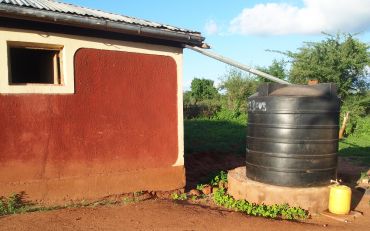 Rainwater harvesting tank. Photo by Rob Hope.
Rainwater harvesting tank. Photo by Rob Hope.But, in Kenya, rainfall patterns are increasingly unpredictable with many dry months. Rainwater tanks often do not last through dry periods, leaving schools with limited alternatives. Schools then face difficult choices depending on access to other water sources.
Oxford University researchers have supported the work of a local professional service provider, FundiFix Ltd, to guarantee repairs in water supplies in schools, clinics and communities water are fixed fast. Some 80,000 people benefit today from FundiFix’s work with future initiatives working to scale and sustain the benefits for millions more.
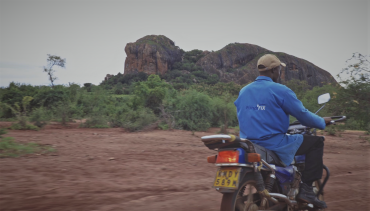 FundiFix bike. Photo by Jeff Waweru
FundiFix bike. Photo by Jeff Waweru- Without urgent action climate change will make it increasingly difficult to achieve a quality education – especially for disadvantaged girls and young women.
Dr Catherine Porter, Young Lives Director, highlights an often overlooked impact of climate change on education
Young Lives’ unique longitudinal research reveals in stark terms how childhood exposure to climate shocks such as droughts and floods has an unequal impact on children’s development, affecting their nutrition and access to education. This impedes their learning progress, with poorest children most affected.
The climate crisis intersects with another crisis: interrupted education and widening inequalities during the COVID-19 pandemic. Urgent action and new research is required to help build resilience, enable 12 years of quality education for girls and boys, and help to prepare them to face vulnerabilities that previous generations have never had to deal with.
Extreme weather events are becoming more frequent with the poorest households hardest hit.
Extreme weather events are expected to rise in frequency and intensity, even if COP26 is successful in charting a path for limiting global warming to 1.5C. And we know low-income countries and younger generations will be hardest hit.
Since 2001, the Young Lives study, has followed the lives of 12,000 children in poor communities across Ethiopia, India (Andhra Pradesh and Telangana), Peru and Vietnam. We have built a unique body of data with huge potential for understanding the long-term impact of climate change on vulnerable children and young people. Our research shows that extreme weather events experienced during childhood are having a significantly unequal impact on the poorest and most vulnerable groups.
By the age of 15, many children in our study had already experienced at least one extreme weather event, such as drought or flooding. In Ethiopia, it was more than half of our sample (54%), 44% in India, and around a third in Vietnam (34%) and Peru (30%).
Children living in the very poorest households have been significantly more affected [by extreme weather events]. In Ethiopia, a startling 81% of children in our poorest households experienced at least one extreme weather event, compared to only 22% in the least poor households
And children living in the very poorest households have been significantly more affected; in Ethiopia, a startling 81% of children in our poorest households had experienced at least one extreme weather event, compared to only 22% in the least poor households. Similar trends can be seen in India (65% v 18%), Peru (63% v 12%) and Vietnam (50% v 17%).
Climate related shocks affecting children in their early life have negative impacts on their growing bodies and minds
When extreme weather events destroy crops or lead to higher food prices, vulnerable families struggle to maintain nutritious diets. Young Lives’ evidence shows that poor diets and child malnutrition can have severe long-term consequences, affecting physical growth, cognitive skills, and progress in school. Across all four countries, the children most likely to be under-nourished are in the poorest households, in rural areas, and often among minority groups.
The first 1000 days of life – from conception to age 2 - are critical for children’s health, development and life chances. In Ethiopia, our results show that early childhood stunting due to malnutrition has a significantly negative impact on important cognitive skills, such as vocabulary and basic mathematics, especially for children whose parents received little or no education.
Climate-crisis induced malnutrition can also be transmitted from one generation to the next
These early stage shocks have significant long-term consequences. In India, Young Lives data matched with historical rainfall data shows that droughts, flooding or cyclones experienced by a mother while she is pregnant can affect the future development of her child’s vocabulary by age five. Longer term effects on basic maths and socio-emotional skills such as self-esteem, self-efficacy and agency, manifest even into adolescence.
In fact, analysis across all four study countries found that rainfall shocks and malnutrition experienced by adolescent girls even before they became pregnant can have a negative impact on future children’s height, again from infancy through to adolescence. Thus, climate-crisis induced malnutrition can also be transmitted from one generation to the next.
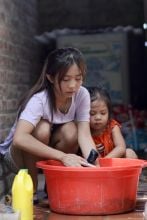
Poorer households are less resilient to financial hardships when climate shocks hit, which can increase the risk of interrupted education
Climate related shocks impact children and young people’s learning and education in different ways throughout their lives. In Vietnam, Young Lives evidence has shown reduced household income due to crop failures directly impact the amount of time children spend in school, particularly those from poorer households.
Families without access to affordable credit spend less on their children’s education during periods of crisis (for example, on school fees, learning materials or transportation) and are more likely to temporarily withdraw children from school, with less learning time available at home, leading to significant interruptions in education.
Without targeted action, the climate crisis is likely to further exacerbate inequalities, just as we have seen during the COVID-19 pandemic.
Girls and young women shoulder additional burdens of household work in times of crisis, amplifying their risk of dropping out of school
Food shortages and stresses on clean water supplies in times of drought and flooding also impact young people’s daily activities. Additional household work, such as walking further to collect drinking water and firewood, or extra childcare responsibilities when children are unable to go to school, often fall on girls and young women, further reducing their own time to study and increasing their risk of dropping out of school altogether.
Hunger can affect a child’s ability to concentrate in the classroom and also increases the likelihood of missing school.
We couldn’t get breakfast last year; we used to go to school without eating anything. We could not follow lessons properly due to hunger, and this contributed to the drop-out of my sister and myself
16 year old girl from Ethiopia, describing the impact of food shortages following drought in her village
The unequal impact of COVID-19 on education highlights a critical need to adapt for the climate crisis
Despite improvements in access to both primary and secondary education over the last two decades, significant inequalities in learning outcomes remain between and across all four of our study countries, with children from poor households and in rural areas consistently disadvantaged.
Without targeted action, the climate crisis is likely to further exacerbate inequalities, just as we have seen during the COVID-19 pandemic. Our recent COVID-19 phone survey shows that interrupted education and a growing digital divide have increased the risk of children and young people from poor and rural backgrounds falling further behind, or never returning to education.
While our results show significant impacts on both girls and boys, the combined pressures of interrupted education, and the trend for households to resort to more traditional gender roles in times of stress, has meant vulnerable girls and young women, have been particularly affected.
And those who have been most impacted by the pandemic are likely to be most vulnerable to the increasing effects of the climate crisis.
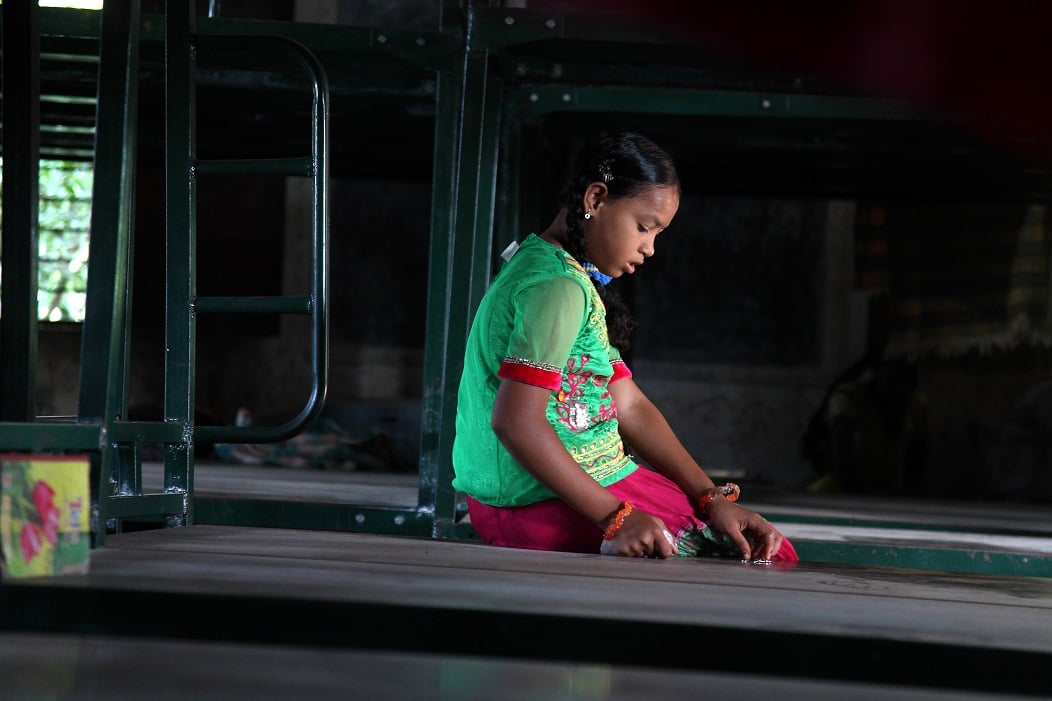
A call to action for more robust research and a broad approach to supporting vulnerable children achieve a quality education
Ensuring countries around the world honour commitments made during COP26 is critical if we are to prevent extreme global temperature rises, and enable the most disadvantaged communities to adapt to climate change in ways that safeguard children’s development and education – especially for girls and young women.
Enabling 12 years of quality education for all children (especially girls) in a changing climate requires a broad approach. Investing in teachers, schools and universities to improve the quality of education is pivotal. But really to make a difference, we also need to address the persistent inequalities that hold children back and make them more vulnerable to external shocks. Ensuring all children get the right start in life, including a sufficient and healthy diet is the foundation for future learning. Providing an enabling environment for all girls and boys to stay in school, with sufficient resources to study is also essential.
With increasing extreme weather events...we need much better understanding of how vulnerable communities actually experience and respond to climate related shocks
With increasing extreme weather events continuing to impact the poorest families most, we need much better understanding of how vulnerable communities actually experience and respond to climate related shocks throughout their lives.
We need to build evidence on:
- how climate related shocks, nutrition and learning interconnect – enabling more holistic programmes of support, including ‘shock-responsive’ social protection programmes to reach disadvantaged households in disaster prone regions, particularly for vulnerable infants and adolescent girls, aligned with early learning and school feeding programmes.
- how and why persistent inequalities continue to underpin the learning crisis in education – further longitudinal research is critical to understand both trends over time and the impacts of specific shocks, including climate related shocks; targeted investment in early years education and addressing the growing digital divide is critical to support poor and marginalised households, particularly in rural areas.
- the additional barriers to girls’ education in a changing climate – strengthening age and gender disaggregated data and evidence on the impact of climate change, and enabling specific action to help keep girls in school in times of stress, including practical measures to relieve burdens of household work and childcare responsibilities.
Dr Porter will be discussing these issues further as part of the COP26 Gender Day Event, Our Future, Our Voice – Girls’ Education and Tackling the Climate Crisis, hosted by the UK’s Foreign, Commonwealth & Development Office (FCDO) on 9 November 2021; to join the event live - see here.
Or here Our Future, Our Voice: Girls' Education and Tackling the Climate Crisis - YouTube
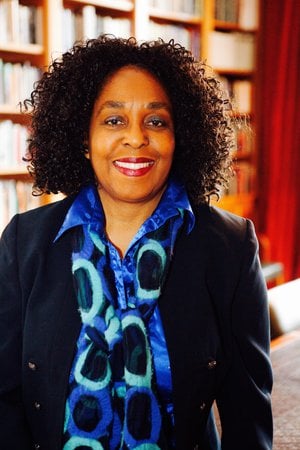
Professor Brenda E Stevenson is an award-winning historian of race, slavery, gender, family, and conflict. She is also a mother and wife, and a Black woman who has dedicated her life to giving voice to the voiceless, by telling the stories of the enslaved and the oppressed.
As she begins her tenure as Oxford University’s first Hillary Rodham Clinton Chair of Women’s History, she discusses her Inaugural lecture.
It is important to understand the unique positions that women have had in various cultures and societies and their experiences continue to be such a fascinating area of study. There is still so much more progression that needs to take place, and so many ways that we are not counted as equals at the table – and sometimes we are not counted at the table at all.
‘In society, we move forward, but we also take a few steps back from time to time, and that is a painful dance’
It was through Susie Byrd’s contribution to an archive on enslaved peoples - particularly enslaved women - that I have been able to do much of my work. This is a woman that we don’t really know much about, but she was an incredible force. She was one of the first people to listen to enslaved women and men, and tell their stories, of what being enslaved meant for them.
Through her work and that of others, we were able to turn a corner in how we looked at enslaved Black people as human beings, who have culture, ideas, family, and pain. People who suffer and love, and experience desire. It is not a matter of portraying people as perfect, but seeing them in their complex entirety, with the same kinds of strengths, weaknesses and abilities to soar and be defeated, as you and me.
Slavery is part of the human experience, or as some people would say, ‘the human stain’, and we really must understand that and what it is to be an enslaved person, to eradicate it.
It’s not just something that took place in the US – or even the Caribbean, and it’s not just Black and white. It is an institution that has taken place since the beginning of what we call civilisation - the Greeks, Romans, Egyptians, Africa, Asia and the Americas, prior to European contact - and really every single society in the world. And it still exists today.
‘It is not a matter of portraying people as perfect, but seeing them in their complex entirety, with the same kinds of strengths, weaknesses and abilities to soar and be defeated, as you and me.’
These cyclical difficulties and horrific inequalities that we live with, see, protest, are frightened by, and in turn, disgusted by, have been systematised over time, in a way that we can’t seem to break out of. I want my students to put themselves into the shoes of these girls and women – or not – because slaves were barefoot – and imagine, what was it like to be them?
There are some unique challenges in teaching history of the enslaved. I think that slavery has been racialized and it can turn people off – particularly young people, because they either identify with that group, or they don’t. They get tired of their group constantly being the subject of negative attention and trauma, and the others feel they are made to feel guilty for things they played no part in.
How people are marginalised across time captures peoples’ imagination when you make it relevant to them. You learn how people survive and overcome that – or they don’t. That is why I like to talk about how slavery has occurred across all societies, and still does.
Race matters, class matters and gender matters, and the ways in which any of us are treated in society, unfortunately, have a lot to do with those kinds of identities.
The truth is that marginalised people (racially, economically, politically, culturally) are much more likely to be victimised in societies where those hierarchies have been established that say that they are not as important as other people. We have seen that happen in the US, UK and almost every place.
We also have to use what we get. We have to speak that truth but use the opportunities that we get to make positive change. In society, we do move forward, but we also sometimes take a few steps back, and that is a painful dance.
Being a Black female administrator in an academic space does come with its own unique challenges. A University is no different to any other place. The same biases and expectations exist as they do in any other industry, and people really see you in the same ways, positively and or negatively, that they see you anywhere and everywhere else.
As my good friend and scholar, Deborah White says, black female scholars often are regarded at universities as ‘matter out of place’.
‘Race matters, class matters and gender matters, and the ways in which any of us are treated in society, unfortunately, have a lot to do with those kinds of identities.’
As a female of colour in an institution not founded by people of colour, regardless of gender, people don’t expect to see you, for you to have a voice, or to be able to contribute or challenge anything. They don’t expect for you to be at the table - or even in the room.
It is so easy to dismiss anyone who looks like me, whether my gender, race, class, generation or at the intersection of these traits, and to dismiss my presence as a tokenistic response to affirmative action, or inclusion, or a quota requirement. Anything that allows them to exclude you on that basis. But guess what? I don’t care anymore!
From the time that I was in college some have viewed me as without merit. Those opinions no longer matter to me. I know that I have much to offer. For whatever reasons that I am where I am, I am thankful.
As institutions work to be more inclusive, the little that they can do - at least initially - can appear tokenistic. But the key is to keep trying, that one hire or story, is one more person and idea than there was yesterday. There is a desire to push us into where we should have been a long time ago, but everything is a negotiation.
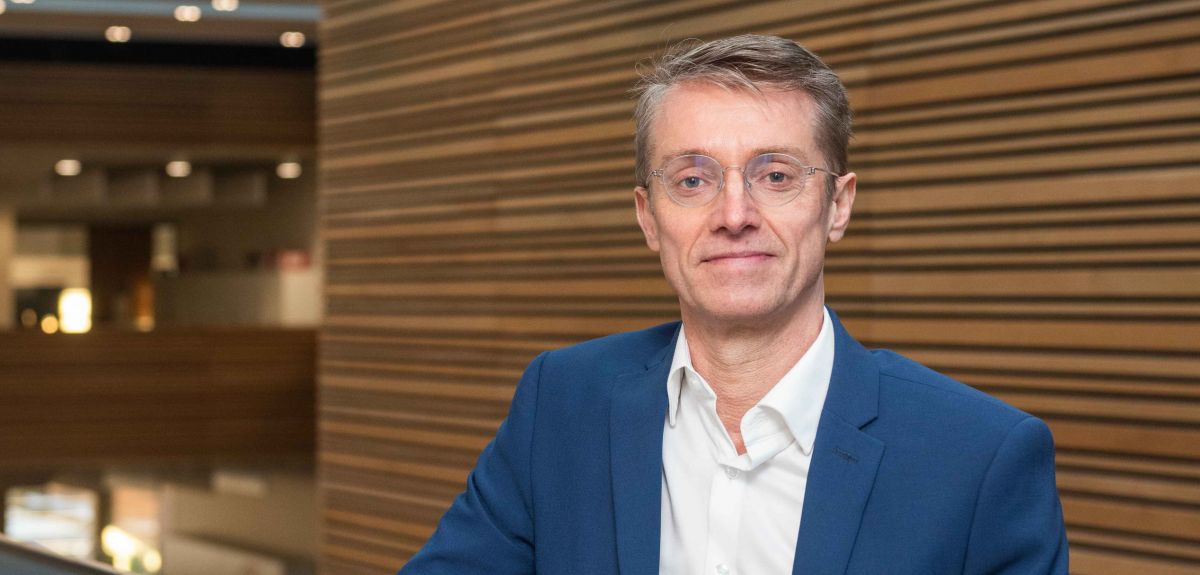
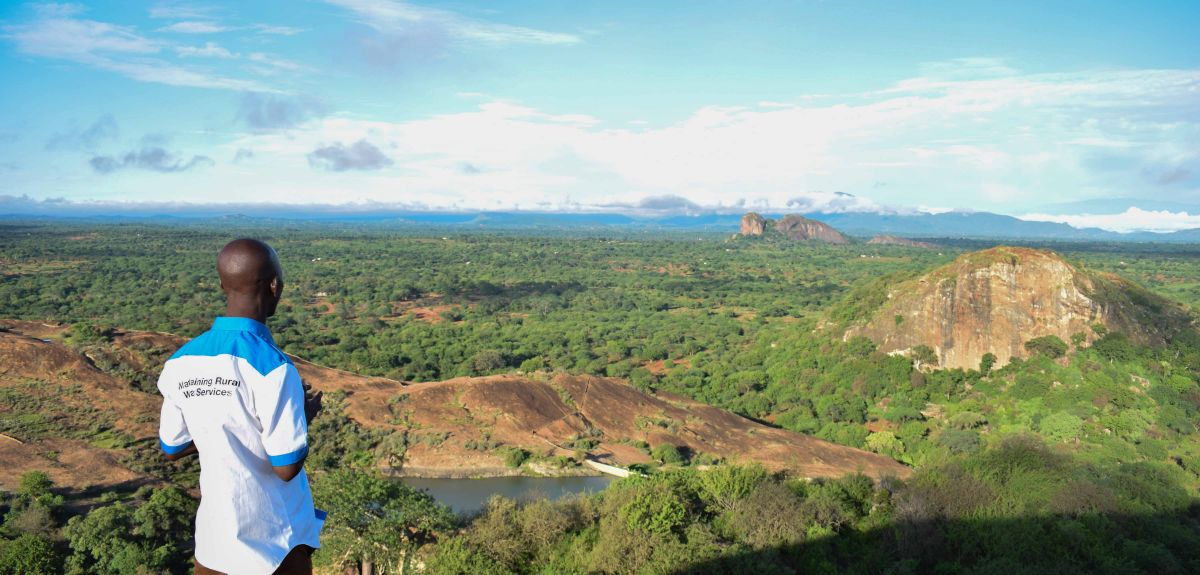
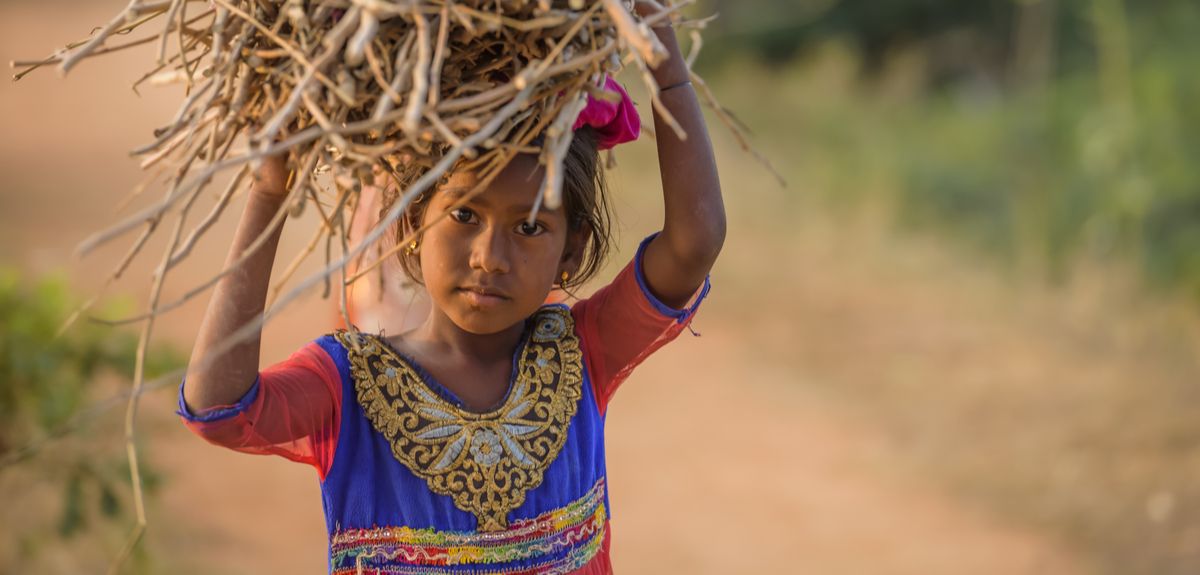
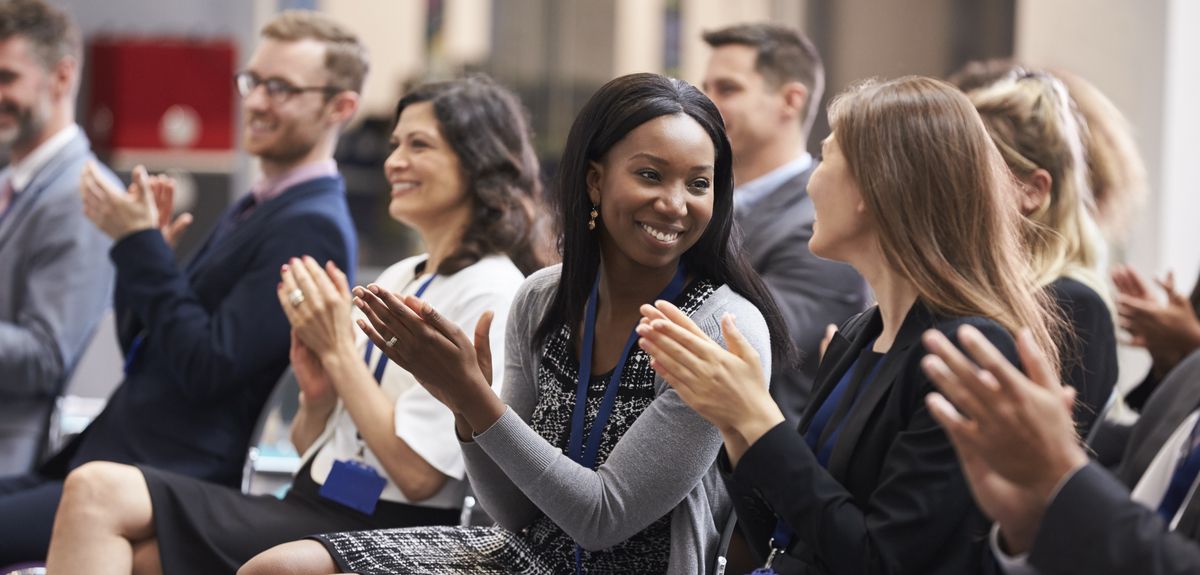
 Can we truly align AI with human values? - Q&A with Brian Christian
Can we truly align AI with human values? - Q&A with Brian Christian  Entering the quantum era
Entering the quantum era Can AI be a force for inclusion?
Can AI be a force for inclusion? AI, automation in the home and its impact on women
AI, automation in the home and its impact on women Inside an Oxford tutorial at the Museum of Natural History
Inside an Oxford tutorial at the Museum of Natural History  Oxford spinout Brainomix is revolutionising stroke care through AI
Oxford spinout Brainomix is revolutionising stroke care through AI Oxford’s first Astrophoria Foundation Year students share their experiences
Oxford’s first Astrophoria Foundation Year students share their experiences DPhil student, Frankco Harris, reflects on his unique journey to Oxford and future plans
DPhil student, Frankco Harris, reflects on his unique journey to Oxford and future plans Oxford undergraduates reflect on their first term
Oxford undergraduates reflect on their first term Unlocking more sustainable futures with green chemistry
Unlocking more sustainable futures with green chemistry